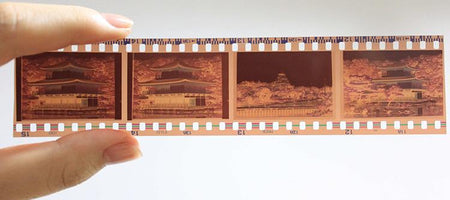An Early History of the Home Movie
When you think of home movies, the first thing to cross your mind is probably the bulky camcorder your dad used to embarrassingly film your family vacations. And for today’s kids, the camcorder is an ancient relic because all they’ve known growing up is smartphone home movies and the YouTube rabbit hole.
But long before video was an option on smartphones, even prior to VHS tapes and camcorders, families were recording their own home movies – but how?
16 mm Format
By the 1920s, film wasn’t new but it was young, and the silent film era had reached its artistic pinnacle. By the late 1920s, 16mm film had become the norm for film production in America and as the technology continued to grow, the camera equipment and film itself started to decrease in price, but not enough to make it universally available and affordable to the general public.
Nope, unless you were wealthy, 16 mm was reserved for bigger Hollywood productions. But while 16 mm film gave shooters the advantage of not being tied to one equipment manufacturer, the impending birth of 8 mm film, which would be cheaper and smaller, relegated 16 mm film to professional shooters and documentarians, particularly in the education industry.
8 mm & Super 8 mm Format
Although film icon, Kodak, released its new 8 mm format in 1932, the home movie didn’t finally land within reach of the average family until a few years later. This film was cheaper, more accessible than 16 mm and the smaller 8 mm format decreased the size of the camera and projectors. By the late 30s, Kodachrome color reversal film for 16 mm and 8 mm helped bring color cinematography into families’ home theater space, although sound was still hard to come across.
Super 8 mm format
While 8 mm film had its reign for several decades, it was in the mid-1960s that Kodak introduced Super 8 film. It used the same film as 8 mm, which made it cheaper to market. The images were clearer, the cartridges easier to load into camera and you could purchase high-end Super 8 mm with a magnetic audio track for home movie synchronized sound. This by all facets was the home movie making film format that became somewhat of a staple for U.S. families, prior to the camcorder in the 80s. In fact, it was so easy to use that Kodak targeted its marketing around “So easy a kid can use it.”
But while some 8 mm film and high-end Super 8 mm may have contained magnetic audio lines – even some rare 16 mm film – an even smaller some of these reels have sound due to improper use of recording equipment required to capture both sound and picture.
So if you’re lucky enough to have stumbled across a box full of old family movie film reels, don’t be alarmed if no audio is transferred during the digitization process, even if that little yellow magnetic audio strip is present on the film. And don’t yell at grandpa for failing to capture both audio and video during the recording, everyone was an amateur back then so cut him some slack.













